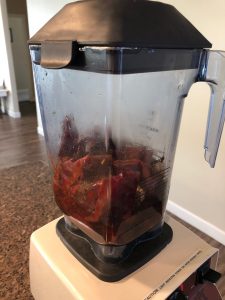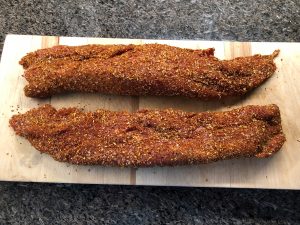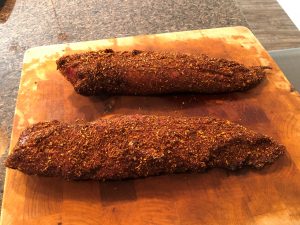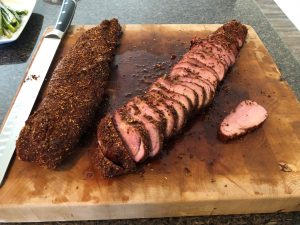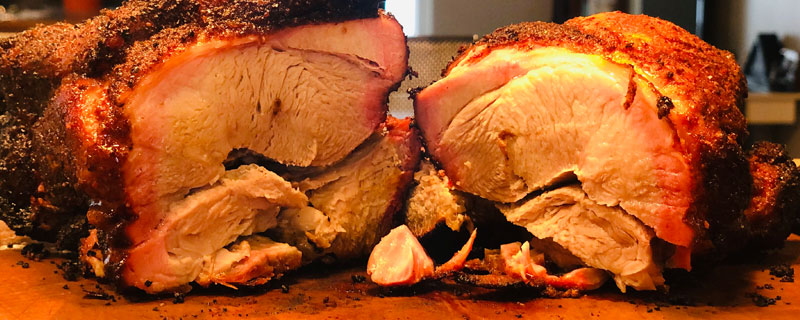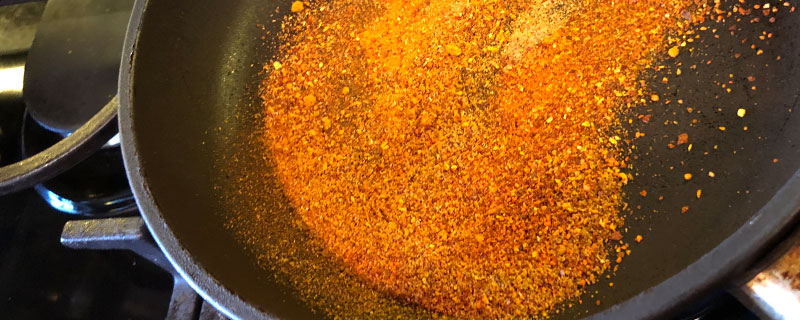Guajillo Chile Sauce and Salsa
I have to admit, I have a serious addiction. Chips and Salsa is one of my favorite things in life. While I love Salsa, I really wanted something with a little more body, flavor, and a little lighter on the tomato flavor. Don’t get me wrong, I love tomatoes. I just have been having a craving for a good red sauce based Salsa. Say hello to my little friend; the Guajillo Chile. These are a special chile. They are extremely flavorful, yet not terribly hot. For me, they have just about the right heat for a red sauce.
This recipe is incredibly easy to make. Do not be intimidated by the chiles. Follow the instructions and you will have stellar results.
This recipe will be heavy with photos, however I feel it will be really helpful if you’re trying to make this for the first time.
Ingredients:
- 20 Guajillo Chiles
- 4-5 cloves garlic
- 3-4 cups water
- 1oz cooking oil
- 1.5 tbsp Espelette Powder
- 1.5 tbsp Ground Cumin
- 2 tbsp Mediterranean Oregano
- 1/2 tbsp Ground Coriander
- 6-8 medium sized, ripe and firm Roma tomatoes
- 1/2 a large sweet onion (2/3 the amount of tomatoes)
- A large handful of Cilantro lightly chopped
- A pair of nitrile or latex gloves
Guajillo Chiles should be soft and pliable. The Guajillo Chiles we sell are always top quality, and bursting with flavor. Put on a pair of nitrile gloves. Start off with a pair of scissors and cut the stems off the chiles. Cut each Chile lengthwise and open up. Remove all the seeds and the veins. (If you wish for a spicier sauce or salsa, leave more of the veins). Dispose of the gloves after you are done removing the seeds and veins.
Place enough water in a pan to cover the chiles most of the way. Add your garlic cloves (cut in half). Turn to high and bring to a boil. Once you have reached a full boil, turn down to medium and simmer for about a minute or two. Remove from heat, cover and let the chiles re-hydrate. Pics below are when I started to boil, and after re-hydration.
Cover the pan with a lid, and while they were waiting their 15 minutes to re-hydrate, I toasted up some spices. I heated a pan until quite hit, and added the Espelette, Cumin, Coriander, and Oregano. I toasted these for approx a minute stirring constantly and not allowing them to burn.
***IMPORTANT NOTE*** When blending ingredients that are hot, you need to be extra cautious. Hot liquids and solids in a blender can have unexpected and explosive results that can cause serious burns. Make sure you are very careful, use a towel to cover the lid and hopper completely. Allowing your ingredients to cool significantly minimizes the risks of burns.
Dump the toasted spices directly into the blender, which already had a little bit of water added to it. I added the re-hydrated Guajillo Chiles, cooking water, and garlic cloves. I blended a few times until smooth. At this point the sauce was a little thicker than I wanted, so I added a little more water and blended again to reach the desired thickness. You want it thick enough to lightly coat the back of a wooden spoon while still being runny.
I have a great little fine mesh strainer that I worked the sauce through. This step is imperative because it removes the pieces of the skin, and other parts that would make the sauce have a less desirable consistency. The bits of skin will add a bitterness to the sauce as well. What is left in the strainer can be disposed of.
Now you want to give the sauce some time to cook. I took the ounce of cooking oil and brought it to a high hemp. Immediately add the sauce to the hot oil. You’re basically frying the sauce. Once the “frying” has mellowed and become more of a boil, turn the heat to a medium low and let simmer for approx 20-30 minutes. At this point I added about 2 tsp of salt. You know it is ready when it coats the back of a wooden spoon and doesn’t run off.
When your sauce has finished simmering, place in a bowl to cool. At this point, the sauce is a great base, could be used as is for a spectacular enchilada sauce, or used in any recipe calling for a basic red sauce. Place the sauce in the fridge after it has cooled. Let it rest in the fridge all day.
Well, this project started out as a Salsa project, so I picked up some great Roma tomatoes, sweet onions, and cilantro. Finely chop the tomatoes (keeping their texture) and finely chopped the onion. Pick all the stems from the cilantro, and lightly chopped it. I added about half the Guajillo Chile Sauce to the fresh chopped veggies. Add about 1 tbsp of sugar, and 1 tsp of salt, to your flavor preference. Stir this up well so everything was mixed consistently.
The final outcome of this Salsa was awesome. It was fresh, tasty, and refreshing. If you want to add some heat to it, you can chop some jalapenos along with the tomato, onion, and cilantro. This was a pretty easy recipe to make. Everyone who tried it was absolutely in love with this and wanted more. Next time I make this recipe, I will be making it tenfold, so I can share the Guajillo Chile Sauce with friends and family.





